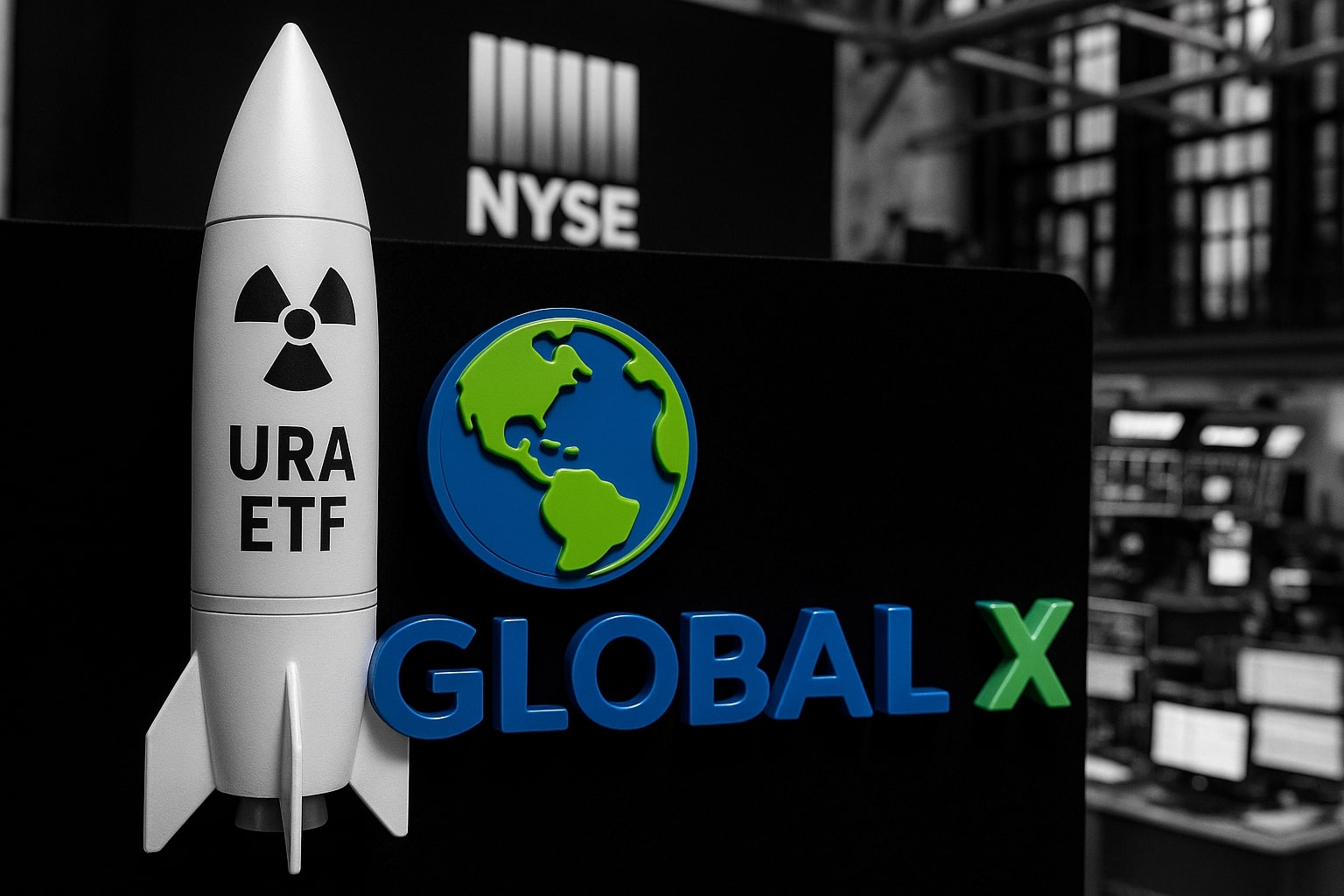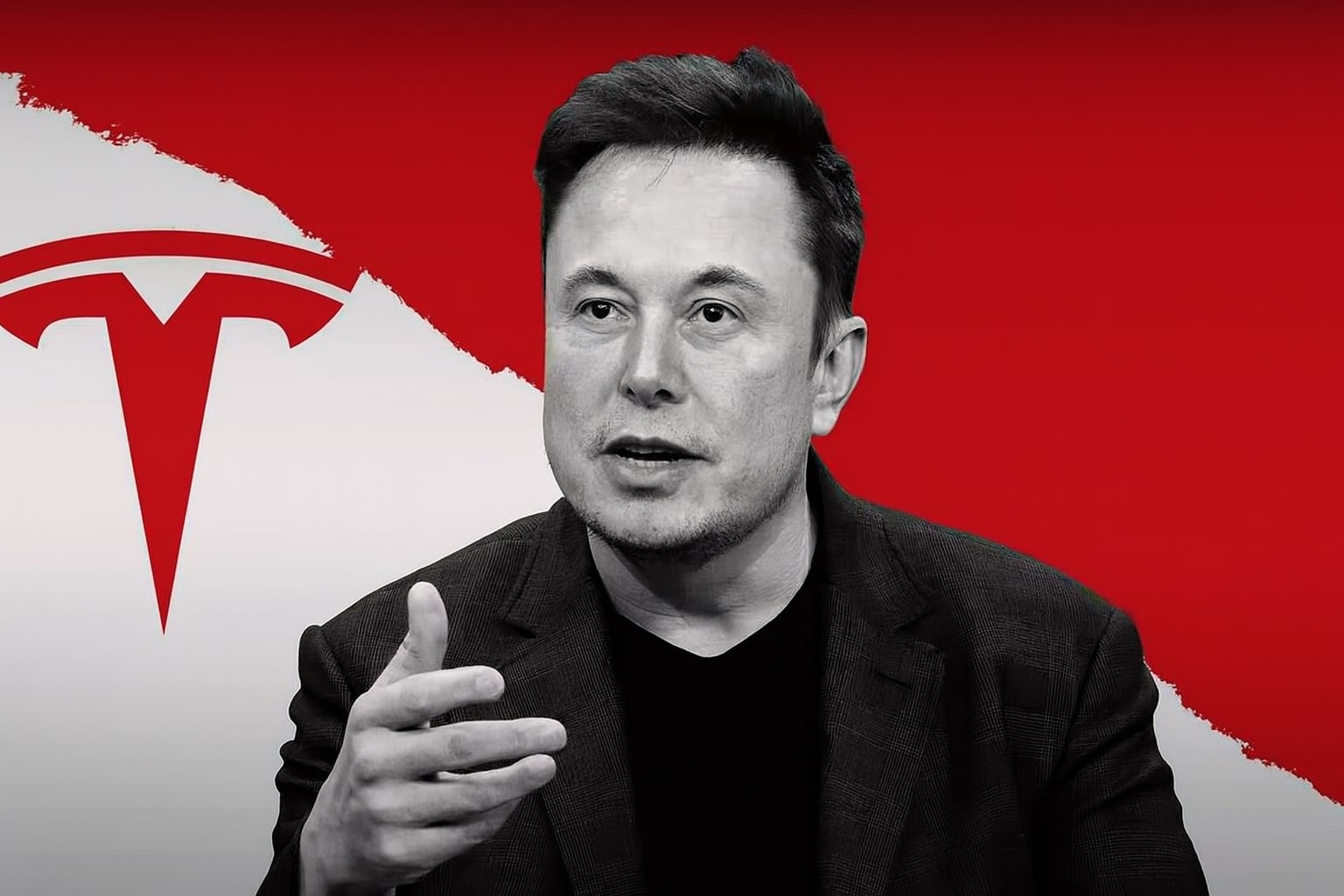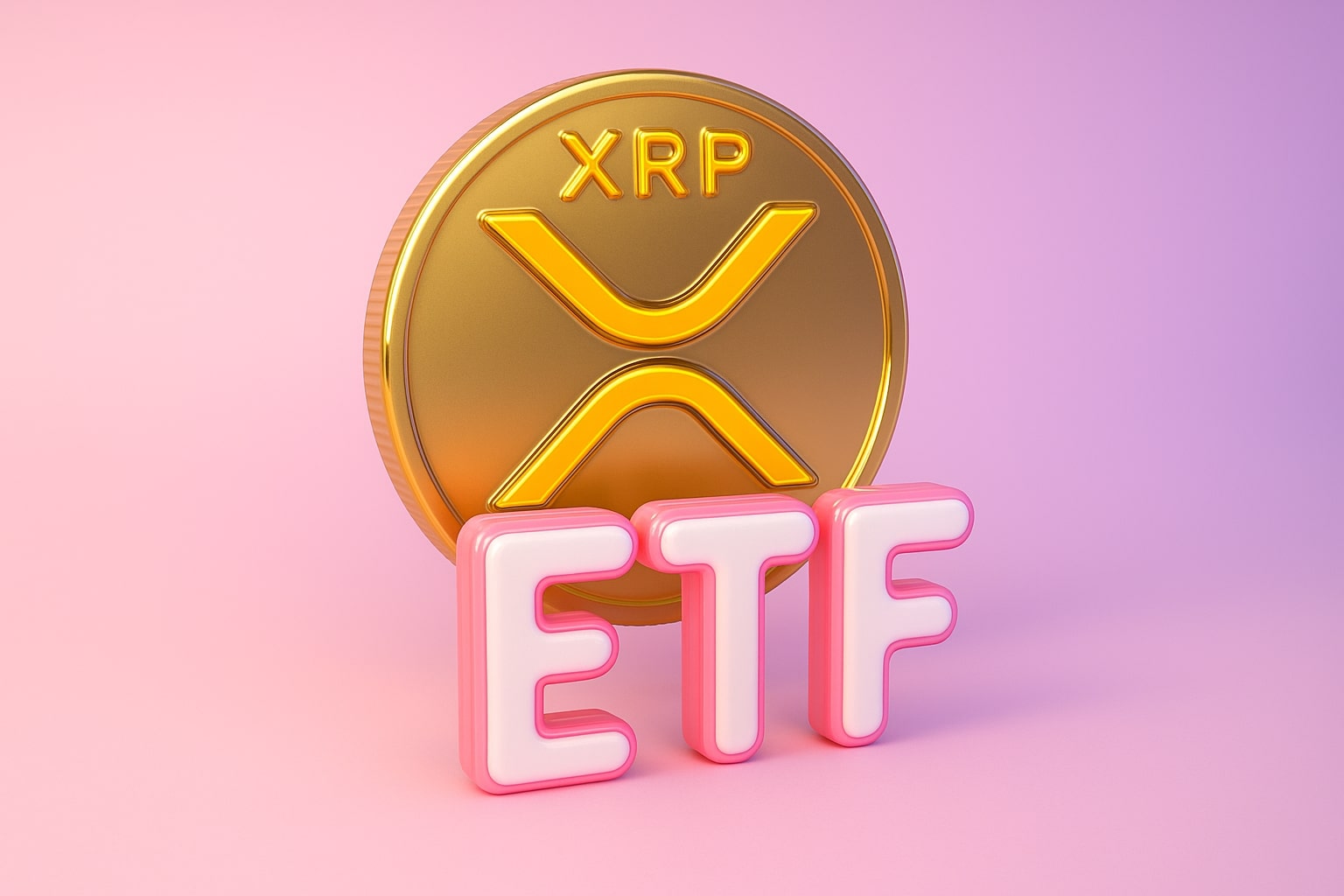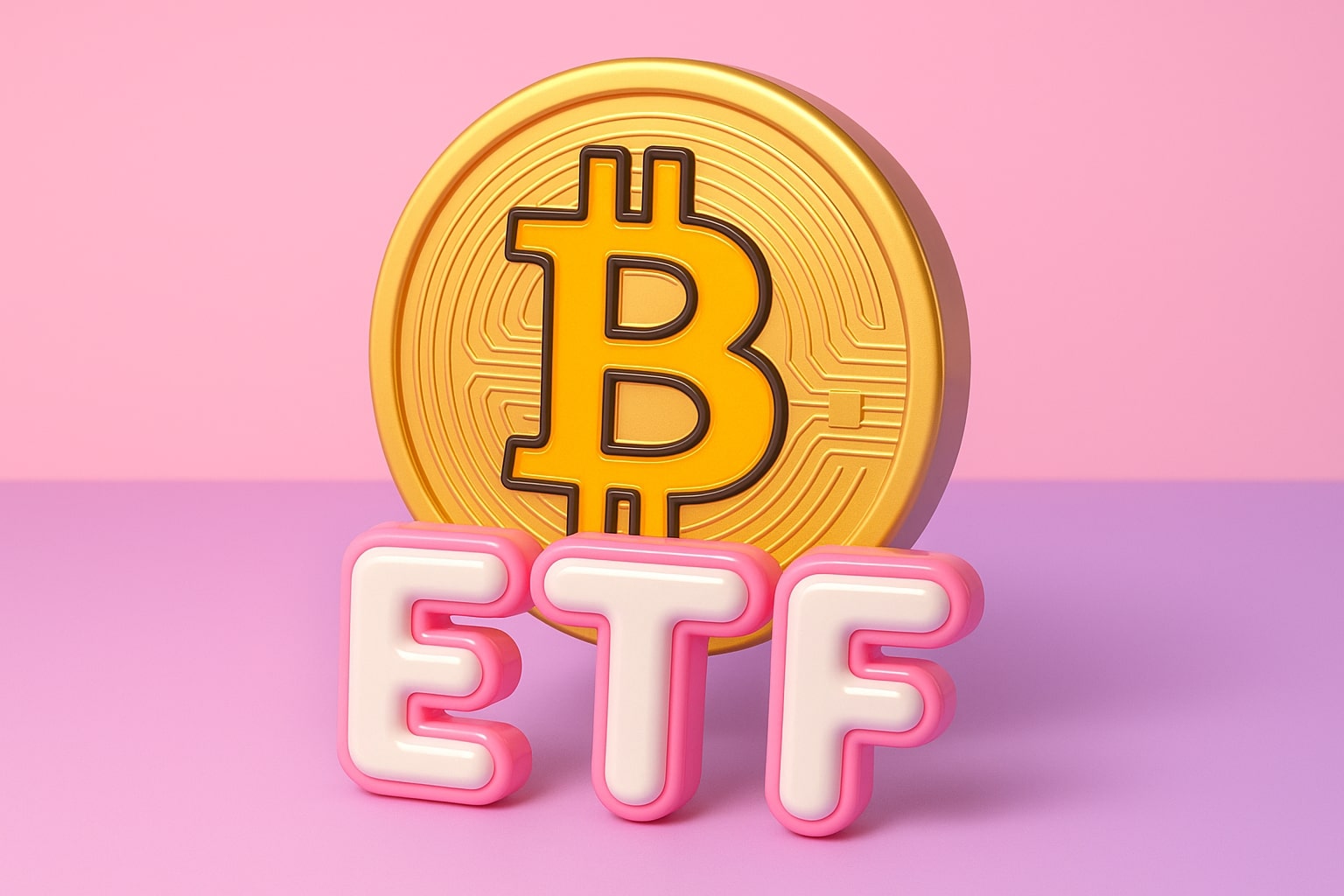NYSEARCA:URA — Up 93.69% YTD as Nuclear Power Becomes the Core Engine of the AI Economy
The Global X Uranium ETF (NYSEARCA:URA) has exploded to $51.87, marking an extraordinary +93.69% year-to-date gain and an 80.26% one-year return, outperforming every major energy and commodity index globally. With $5.64 billion in assets under management, URA is now the primary institutional gateway into the nuclear renaissance that’s fueling the artificial intelligence infrastructure boom. Trading volume surged to 10.29 million shares, more than double its average of 4.18 million, highlighting the depth of institutional capital flowing into uranium-linked equities. Its expense ratio stands at 0.69%, with 1.54% yield, and a price-to-earnings ratio of 39.79x, confirming strong growth expectations already embedded in the valuation. The ETF is now trading near its 52-week high of $55.44, well above its low of $19.50, an almost 184% recovery within a year—a performance rarely seen in the natural resources segment.
NYSEARCA:URA | Portfolio Power Centered on Cameco and Oklo, Two Names Driving 34% of Value
The core strength of URA lies in its concentrated allocation. Cameco Corporation (20.22%) and Oklo Inc. (13.72%) together represent roughly one-third of total assets, turning the ETF into a high-conviction bet on both uranium stability and nuclear innovation. Cameco (NYSE:CCJ) gained +67% YTD, supported by long-term supply agreements that stretch across a decade and ensure predictable revenue streams independent of spot uranium price swings. Meanwhile, Oklo (NASDAQ:OKLO), the disruptor behind next-generation 75 MW modular microreactors, soared +534% YTD as it positions to connect its first mini-reactor to the grid by 2027. Oklo’s technology, developed under the U.S. Department of Energy’s Nuclear Reactor Pilot Program, will test three FOAK (First of a Kind) systems by 2026, with DOE approval timelines now expected to shrink to under 18 months from historical averages of 8–12 years due to regulatory reforms. These timelines are game-changers—compressing capital cycles and multiplying potential IRRs for advanced nuclear developers within URA’s portfolio.
NYSEARCA:URA | AI’s Energy Hunger Rewrites the Nuclear Demand Equation
The AI revolution is transforming energy infrastructure faster than policy can adapt. Power-hungry data centers—driven by Nvidia Blackwell and Rubin Ultra GPUs—now consume up to 600 kW per rack, compared to less than 10 kW just five years ago. This six-thousand-percent leap in energy density renders renewables insufficient to meet the constant base-load requirements of AI computing. Major hyperscalers are signing multi-decade PPAs (Power Purchase Agreements) with nuclear providers to guarantee uninterrupted electricity supply. Microsoft’s agreement with Constellation Energy is already restarting the Three Mile Island facility at a cost of $1.6 billion in upgrades. Meta Platforms followed with a 20-year, 1.1-gigawatt contract, enough power for a city of one million people. This direct linkage between AI compute demand and nuclear generation capacity marks a structural shift in global power economics—nuclear energy is no longer a niche green policy play but the physical backbone of digital expansion.
NYSEARCA:URA | U.S. Policy Catalysts Accelerate the Uranium Supply Chain
The political landscape for nuclear energy has never been stronger. The Trump administration’s 2025 executive order targets a quadrupling of U.S. nuclear capacity from under 100 GW to 400 GW by 2050, alongside deep NRC reform to fast-track reactor licensing and prototype approvals. This reform caps approval windows at 18 months for new plants and 12 months for renewals, slashing regulatory friction that previously crippled nuclear development. Simultaneously, the Reinvigorating the Nuclear Industrial Base Act, effective May 2025, revives domestic enrichment and HALEU (High-Assay Low-Enriched Uranium) production—critical for small modular reactors (SMRs). This benefits Centrus Energy Corp. (NYSE:LEU), which carries a 5.03% weight in URA and remains one of only two U.S. companies certified for HALEU fuel supply. With uranium demand forecast to double by 2040—from 65,650 tons to 130,000 tons—URA’s focus on miners and fuel-cycle firms like Energy Fuels (3.32%), Denison Mines (2.56%), and NexGen Energy (4.88%) positions it to directly capture the supply chain expansion driven by both AI and government energy security mandates.
NYSEARCA:URA | Performance Metrics and Sector Allocation Underscore its Global Reach
Year-to-date, URA’s 93.69% total return vastly outpaces the Natural Resources ETF category average of 27.03%. Over a one-year horizon, URA delivered 80.26%, versus just 14.01% for the category benchmark. Over three years, cumulative returns of 43.05% reaffirm that this rally is not speculative hype but the reflection of sustained investor conviction. The ETF’s portfolio composition includes 62.43% Energy, 17.91% Industrials, and 13.76% Utilities, giving it a hybrid character—combining raw material exposure with engineering and generation capacity. The 5.1 billion in net assets and the dominance of equity holdings (99.9% equity allocation) confirm that URA is fully risk-on, directly linked to the uranium supply ecosystem rather than derivative or commodity instruments.
NYSEARCA:URA | Global and Political Alignment: The Nuclear Renaissance Is Now Policy
The global policy momentum behind nuclear energy is clear and unprecedented. At COP28, more than 20 nations—including the U.S., France, Japan, and South Korea—committed to tripling nuclear capacity by 2050. In the U.K., Centrica extended the life of Heysham 1 and Hartlepool stations to 2028 and partnered with X-energy for a 6 GW Xe-100 modular reactor program. This synchronization between state policy and industrial capital is feeding the institutional rotation into URA, now the most efficient proxy for the nuclear supply chain. In Europe, reactivation of idle reactors is accelerating, with France targeting 14 new EPRs and Germany reconsidering its post-2022 shutdown stance. These moves are key tailwinds for uranium miners, fuel processors, and engineering companies embedded in URA’s index.
NYSEARCA:URA | Momentum and Valuation – Overheated but Not Overhyped
At $51.87, URA trades near record levels, with NAV at $52.13 and a modest post-market dip to $51.70 (-0.33%). Despite premium valuations—Cameco at 75x forward earnings and Oklo still loss-making—the macro context supports sustained inflows. Uranium miners are priced for future scarcity, not current spot price performance. The uranium spot price, near $106/lb, lags behind the equity complex, suggesting equities are front-running physical shortages. The ETF’s strong beta of 1.08 implies healthy correlation to cyclical assets, meaning URA still reacts aggressively to energy and AI capital expenditure cycles.
NYSEARCA:URA | Institutional Flows and Retail Engagement Strengthen Liquidity
The liquidity expansion in URA is remarkable. Institutional money from pension funds and energy-transition portfolios has pushed AUM from $4.2B in Q1 to $5.64B in Q4 2025, a 34% increase in capital under management within nine months. The surge parallels the timeline of AI infrastructure investment commitments announced by Microsoft, Google, and Amazon, linking URA’s rally directly to hyperscaler nuclear PPAs. Retail participation has also increased sharply, with daily turnover surpassing $500 million, making URA one of the top 10 traded natural resources ETFs globally.
NYSEARCA:URA | Comparative Advantage Over URNM and NLR Peers
When compared with its peers, URA maintains a clear performance advantage. While URNM (Sprott Uranium Miners ETF) sits at $61.65 (+0.28%), it remains more sensitive to spot uranium volatility. The VanEck Uranium & Nuclear ETF (NLR) trades at $146.60 (-0.38%), offering stability but limited growth due to its heavier weighting in utility operators. URA’s hybrid structure—90% equities, 10% spot uranium through Sprott Physical Uranium Trust (5.77% allocation)—strikes the balance between growth and material exposure, explaining its stronger relative momentum.



















